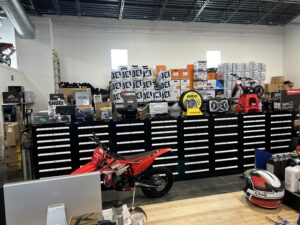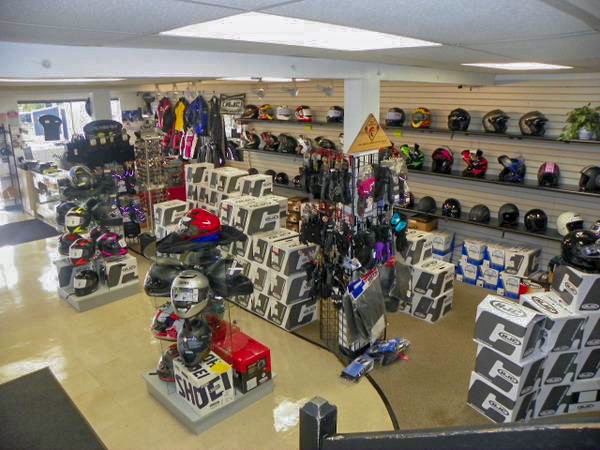Go To Our Motorcycle Shop for Specialist Recommendations and Quality Products
Go To Our Motorcycle Shop for Specialist Recommendations and Quality Products
Blog Article
Recognizing the Important Parts of a Bike: A Comprehensive Guide for Fanatics
For bike fanatics seeking to boost their riding experience and guarantee their bikes run smoothly, comprehending the necessary components of a motorbike is vital. Each component, from the engine's complex operations to the important function of the braking systems, not only impacts performance however also safety and security and convenience. This guide will walk through the basic parts that every biker need to know with, enabling notified selections in both upkeep and prospective upgrades. As we start this exploration, one must ask: exactly how does each part engage to develop the smooth adventure every fanatic looks for?
Engine Components

The camshaft plays a crucial role in controlling the timing of the engine's valves, making certain the precise opening and closing needed for effective gas and air intake, along with exhaust expulsion. This timing is critical to keeping ideal engine efficiency and performance. Additionally, the carburetor or gas shot system, depending upon the bike version, is accountable for blending air with fuel in the correct ratio for combustion.
The cooling system, either air or liquid-based, functions to preserve the engine's temperature level within functional limits, stopping getting too hot and making certain long life - motorbike shop. Each component, thoroughly made and integrated, adds to the seamless operation of the engine, specifying the motorbike's power result and general performance
Transmission System
Indispensable to the motorcycle's functionality, the transmission system guarantees efficient power transfer from the engine to the wheels. This system makes up a number of essential parts, including the clutch, transmission, and last drive, each playing a vital role in converting the engine's power right into movement. The clutch, usually operated by a hand lever, offers to engage and disengage the engine from the transmission, permitting smooth gear modifications and controlled velocity.
The gearbox, often referred to as the transmission appropriate, has a set of gears that riders can manually change via to readjust the bike's speed and torque output. These equipments are organized in a sequence that makes it possible for the motorbike to increase efficiently and maintain optimum engine efficiency throughout numerous speeds. The majority of motorbikes make use of a sequential gearbox, requiring the cyclist to move gears in a predetermined order.
Braking Devices
While comprehending the transmission system is key to harnessing a motorbike's power, similarly important is the capability to manage and stop that power successfully, which is where stopping mechanisms come into play. Brakes are important for safety and efficiency, supplying the rider with the essential control to navigate various terrains and problems. Commonly, motorcycles feature two sorts of braking systems: disc brakes and drum brakes.
Disc brakes are much more common in modern-day motorcycles due to their premium performance. They contain a brake disc, caliper, and pads. When activated, the caliper squeezes the brake pads versus the spinning disc, transforming kinetic energy right into heat, therefore slowing down the wheel. This system provides far better warm dissipation, consistent efficiency, and enhanced stopping power, especially in damp problems.
Conversely, drum brakes, though much less common, are still discovered in some motorbikes. They work by pressing brake shoes against the internal surface of a drum affixed to the wheel. While normally much less efficient in warm dissipation and quiting power, drum brakes are simpler and extra affordable.
Understanding these stopping systems' nuances allows bikers to maintain their bikes effectively and value the design that makes certain secure and effective stopping.
Suspension and Guiding
Suspension and guiding systems are essential elements that dramatically affect a bike's handling and experience convenience. The shock absorber, consisting of forks at the front and shock absorbers at the back, soaks up road irregularities, improving stability and control. Front forks, commonly telescopic or inverted, compress and rebound to minimize impacts, while back shock absorbers preserve tire contact with the roadway, crucial for grip and security.
Guiding, focused around the handlebars, connects the cyclist to the motorbike's directional control. The guiding head bearings make sure smooth operation, allowing exact ability to move. Correct placement and maintenance of these bearings are important for foreseeable guiding response and minimizing cyclist fatigue.
The suspension's adjustability is an additional critical aspect; preload, damping, and rebound setups allow customization to fit various riding designs and conditions. This versatility is vital for maximizing performance, whether browsing urban roads or tackling sturdy tracks. Technologies like digital shock absorber provide real-time changes, improving adventure quality throughout varied terrains.

Electric Solutions
After ensuring a smooth and regulated trip via efficient suspension and steering systems, attention turns to the electric systems, a crucial aspect of contemporary motorcycles. These systems play an essential function not just in beginning the engine yet likewise in powering different components that enhance the capability and safety of the motorbike.
At the heart of a motorbike's electrical system is the battery, which stores electrical power necessary for starting the engine and powering complementary systems - mx parts nz. The generator or generator, combined with the rectifier-regulator, makes sure the battery stays charged while the motorcycle is in operation, converting visit site mechanical power into electrical energy and keeping voltage levels
The ignition system, an additional important element, is liable for stiring up the air-fuel combination in the engine's cyndrical tubes. Modern motorbikes frequently use a digital ignition system, using higher effectiveness and dependability compared to standard systems.
Illumination article systems, including headlights, tail lights, and indications, are additionally crucial, guaranteeing exposure and safety for the rider. Added digital components such as sensors, control devices, and presents contribute to innovative features like gas shot management, anti-lock braking systems (ABDOMINAL MUSCLE), and digital control panels, better boosting the riding experience.
Conclusion
A thorough understanding of a bike's vital parts, consisting of the engine, transmission system, stopping devices, suspension, guiding, and electrical systems, is essential for enthusiasts aiming to optimize convenience, security, and efficiency. Mastery of these components permits informed decisions pertaining to upkeep and upgrades, inevitably enhancing the riding experience. By integrating this knowledge, cyclists can guarantee their bikes run at peak effectiveness and dependability, thereby optimizing both pleasure and long life of their lorries.
For bike fanatics looking to elevate their riding experience and guarantee their bikes run efficiently, recognizing the crucial elements of a bike is paramount.Important to the bike's performance, the transmission system ensures efficient power transfer from the engine to the wheels.While understanding the transmission system is key to utilizing a bike's power, equally important is the ability to control and quit that power successfully, which is where stopping systems come into play. Commonly, bikes feature 2 kinds of stopping systems: disc brakes and drum brakes.
A comprehensive comprehension of a motorbike's vital components, including the engine, transmission system, braking mechanisms, suspension, steering, and electric systems, is indispensable for enthusiasts intending to optimize convenience, riding gear store near me efficiency, and safety and security.
Report this page